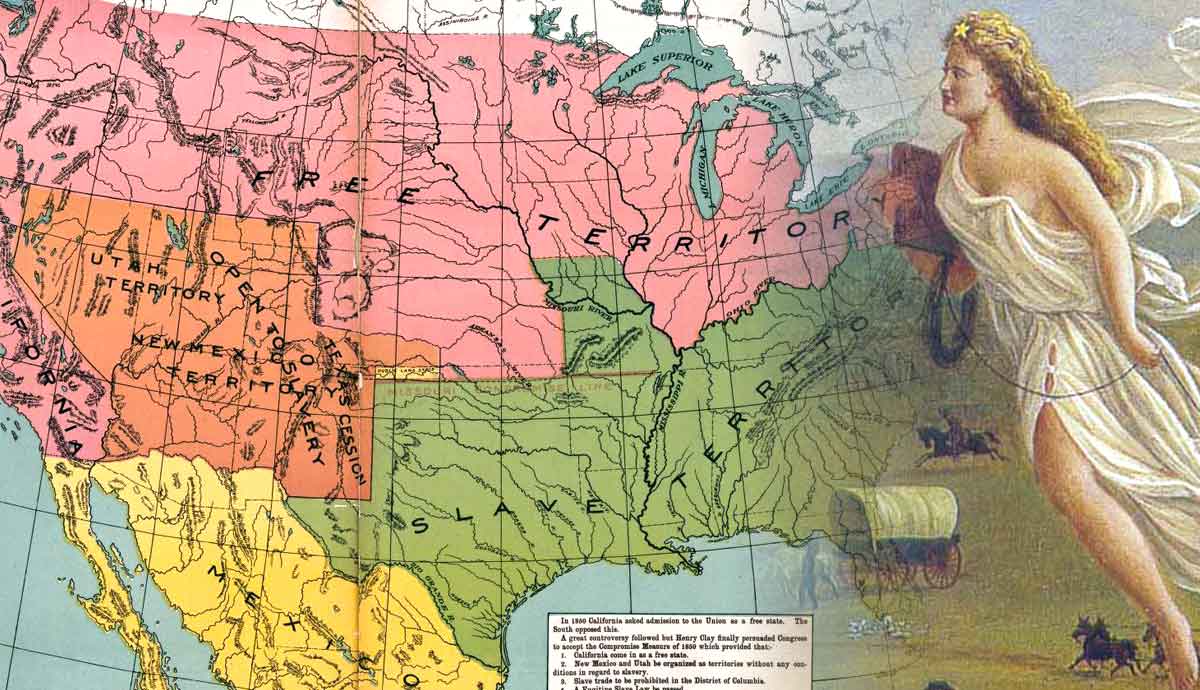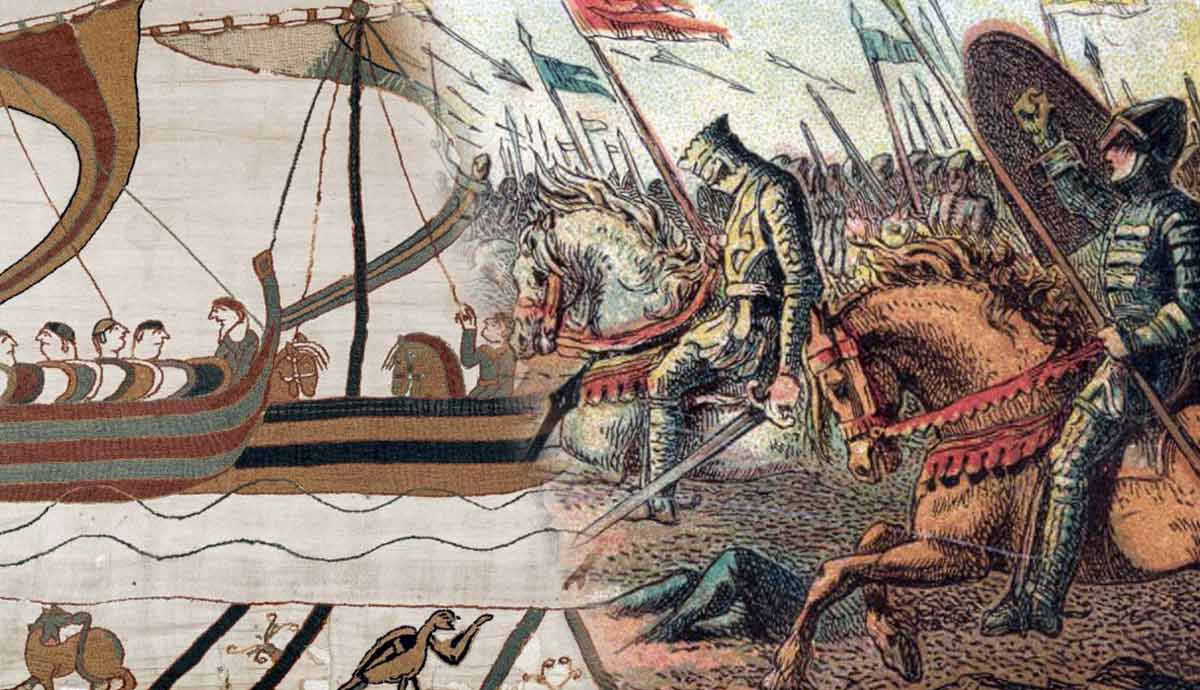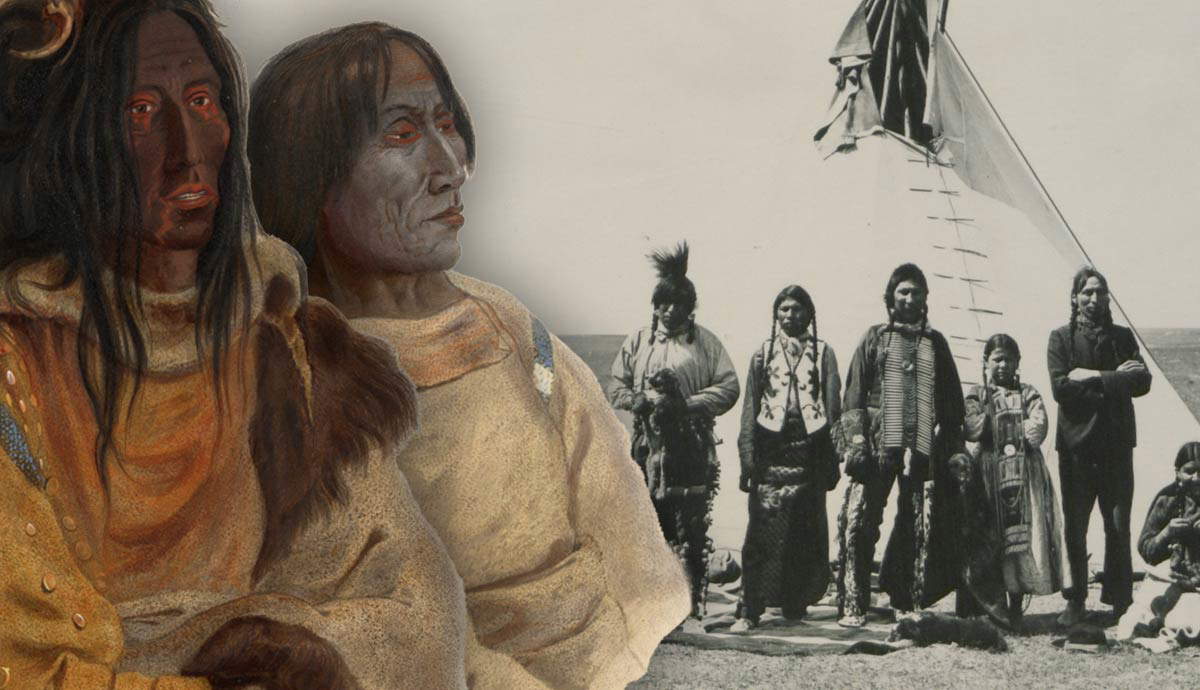
For about one hundred years, a frontier existed for the United States of America, even longer if you count Alaska and Hawaii. The continental United States did not formalize its 48 states until 1912, and the final two states were not added until 1959. Some would even consider westward expansion to include American imperialism in the late 1890s as the US looked to add islands in the Pacific to its sphere of influence. How did all of this westward expansion, beginning with the Northwest Territory in 1787, affect US elections? What opportunities and challenges did westward expansion present to political candidates, especially those hoping to become president?
1804: Louisiana Purchase & Lewis and Clark Expedition

In 1803, US President Thomas Jefferson was serving his first term in office after winning the contentious election of 1800 against incumbent John Adams. A new French leader, Napoleon Bonaparte, needed money for his planned offensives across Europe…and offered to sell the Louisiana Territory to the United States for $15 million. Jefferson was faced with a constitutional dilemma—could he make the purchase? Nothing in the nation’s guiding document mentioned the president being able to purchase land. Making an executive decision, Jefferson agreed to the deal and effectively doubled the size of the country.
The Louisiana Purchase was highly popular with Americans, who felt invigorated by the bountiful new land. They saw it as a sign of the United States’ growing strength, and many were inspired by the Lewis and Clark Expedition that Jefferson sent west to explore the new land. The purchase gave the United States the important port city of New Orleans, which opened up trade along the Mississippi River valley. Some Federalists in the northeast were uneasy with the Louisiana Purchase, however, because it proportionally increased the economic power of the western territories, which could now use New Orleans instead of traditional eastern cities.
1832: Andrew Jackson & Challenges With Native Americans

The Louisiana Purchase added a considerable amount of western land to the United States. By the 1820s, many Americans were eager to settle it. This quickly increased conflicts between white settlers and Native Americans. In 1828, notable “Indian fighter” Andrew Jackson was elected president four years after his controversial rejection by the US House of Representatives despite winning the most popular and the most electoral votes. His only major proposed legislation to become law was the Indian Removal Act of 1830. Native Americans in the South were forced to either move west or become citizens of the states in which they resided—and lose much of their traditional land to settlers.
Despite Jackson’s strong popularity as president, many Americans protested the Indian Removal Act as inhumane. Some Native American tribes signed agreements with the federal and state governments, which promised to protect their remaining lands in those states. However, the governments rarely followed through, allowing much of the protected land to be pillaged. Jackson easily won re-election in 1832, signaling that most voters accepted the Indian Removal Act and its results.
1844: Annexing Texas (and Pursuing Oregon)

While Andrew Jackson’s reforms opened up land in the West to American settlement, a foreign policy drama was brewing on the US border with Mexico. The northeastern province of Mexico, Texas, declared its independence and fought a revolutionary war. In 1836, the Republic of Texas secured its freedom but remained wary of Mexican attempts to reclaim it. Many Texans were immigrants from the United States and felt an affinity for their country of origin. Quickly, many Texans and Americans began exploring the possibility of Texas being annexed by the United States.

In 1841, pro-slavery Vice President John Tyler was elevated to the Oval Office upon the sudden death of William Henry Harrison. He quickly looked to annex Texas, arguing that the vulnerable republic would be taken by another power. The debate over Texas annexation became a major issue in the 1844 presidential election. It was strongly supported by Democratic nominee James K. Polk, who was a firm believer in Manifest Destiny. Polk won the election, and Congress approved Texas’ annexation as the 28th US state the following year.
1848: The Mexican-American War

The annexation of Texas by the United States restored a US-Mexico border. Neither nation agreed on the true border, with the United States claiming the further south Rio Grande River and Mexico claiming the further north Nueces River. The disputed territory in the Nueces Strip resulted in bloodshed in 1846, with Mexican troops firing on United States soldiers. Quickly, the Polk administration asked for a declaration of war. Even early in the war, politicians jockeyed for power regarding what should be done with the land inevitably won from Mexico, which fought with obsolete weaponry and tactics.
A resounding American triumph in the war in 1848 helped make General Zachary Taylor—a war hero after battlefield victories at Monterrey and Buena Vista—the next US president. Taylor took a hands-off approach to the heated debate over how the Mexican Cession would be divided between slave and free territories, letting Congress decide. He encouraged citizens in the new western territories of California and Utah to pursue statehood, through which they could decide to ban slavery. Despite Taylor’s wartime popularity, he showed little strong leadership regarding America’s war-gained territory during his short tenure in office; he died after only 16 months in the White House.
1852 and 1856: Slavery in the Post-War Territories

The Compromise of 1850 ended the slave trade in Washington DC, admitted California into the United States as a free state, and left the territories between it and Texas to decide for themselves. To appease angry slave states, the Compromise included a stronger fugitive slave act, making it easier for Southern enslavers to retrieve escaped enslaved people. Instead of solving any debates over slavery, Zachary Taylor’s brief tenure in office prolonged the tensions. In 1852, slavery made the presidential election particularly contentious and was hotly debated in new territories like Utah.
US President Franklin Pierce, elected in 1852, did little to resolve the debate. The Kansas-Nebraska Act furthered the concept of popular sovereignty in determining whether a territory would be slave or free. This resulted in violence in Kansas and Nebraska as outsiders rushed into those territories to try to influence governments. The next presidential election, in 1856, saw the new Republican Party, which opposed slavery, nominate famous western explorer John C. Fremont as its nominee. Despite Fremont’s popularity as an explorer of the Rocky Mountain region, Democratic nominee James Buchanan won the election…but also sought to avoid the issue of slavery.
1868 and 1872: The Railroads and Westward Expansion

The horrendous American Civil War (1861-65) finally ended the decades-old debate over slavery. A wounded America tried to heal and move on from its deep divisions and looked to the West as a source of inspiration and rebirth. Thanks to new railroads, the territories that had debated slavery in the 1850s were now open to mass settlement. Railroads had been a major key to Union victory in the Civil War, and the Republican administration of US President Abraham Lincoln greatly bolstered that industry.
In 1868, Lincoln’s wartime military leader, Ulysses S. Grant, easily won the Republican nomination and the White House. His administration presided over the completion of the Transcontinental Railroad in May 1869, boosting Grant’s popularity further by uniting the nation from east to west. Three years later, Grant signed into law the first national park: Yellowstone. Grant’s support of western exploration combined with his military victories made him a popular leader, and he won re-election to the presidency that November.
1876-1892: The Indian Wars and Mormons

As the West was settled thanks to the railroads, there were increasing clashes between white settlers and Native Americans. When settlers or companies had a dispute with Native Americans, they often called on the US Army. Additionally, Native Americans were forced into desperate straits by the destruction of the American bison. Tribes often followed massive bison herds, utilizing all parts of the animal. Many Americans supported government policies that destroyed Native American traditions, such as nomadic lifestyles. Rutherford B. Hayes, elected in 1876, presided over much of the end of the Indian War era.
The destruction of Native American tribes’ ways of life was not protested by the voting public, which wanted western land freed for settlement or investment. In these western territories, the sparse populations prevented them from having much voice in the Electoral College, thus meaning little impact on presidential elections. Resentment against the growing Mormon populations in Idaho and other territories in the 1880s became a political issue as the territorial legislatures tried to prevent Mormons from voting. In 1890, Utah was only allowed to become a state after the Church of Jesus Christ of Latter-Day Saints, or Mormon church, banned polygamy.
1898: The Spanish-American War

The 1890 US Census reported that the West was settled. However, westward expansion continued into the Pacific Ocean as an increasingly industrialized America looked to build spheres of influence overseas. Since the 1850s, the United States had been eager to increase trade with China and Japan. There was lots of profit to be made by importing exotic goods from Asia. To support regular trade, the US wanted to control islands in the Pacific to allow ships to refuel. This led to eagerness for the US to exploit tensions with Spain, which controlled islands in both the Caribbean and the Pacific.
Goaded by yellow journalism, the US rushed into war with Spain in 1898. The four-month war was a tremendous victory. President William McKinley toured the nation in the aftermath and felt out public opinion on what to do with the territories captured from Spain. When he felt that the public supported annexing the territories, he did so. This helped bolster McKinley’s image as a wartime president and a steward of a growing American empire—he won re-election in 1900, aided by adding Spanish-American War hero Theodore Roosevelt to the ticket as his running mate.
1956 and 1960: Alaska and Hawaii

Some fifty years later, the United States was still not fully formed as we know it today! Although the continental United States formalized its last two states in the early 1910s, elevating them from territories, Alaska and Hawaii remained two prominent territories isolated from the mainland. Alaska had been purchased from Russia in 1867 in a move originally criticized as “[William] Seward’s Folly,” but later discoveries of gold and oil proved the $7.2 million purchase to be a sound investment. Hawaii had been annexed by the United States in 1898 to assist with controlling the Pacific Ocean during the Spanish-American War.
In the 1950s, questions about elevating Alaska and Hawaii to statehood were mired in partisan politics. Granting statehood would provide each territory two US senators and at least one US representative—would that shift the balance of power in Congress? In 1956, both the Democratic and Republican parties put Alaska and Hawaii statehood in their party platforms, but things were less unified behind the scenes. Democrats were strong supporters of statehood, but Republican president Dwight D. Eisenhower accepted statehood for the two territories on national security grounds. With the Cold War ongoing, making Alaska and Hawaii states would give the US more reason to project power into the Pacific region.
Summary of Western Expansion on US Elections

In the early decades of westward expansion, the process was supported by political candidates as a sign of America’s growing size and strength. By the 1850s, however, westward expansion was seen more as a potential expansion of slavery than a sign of economic growth, leading some to oppose adding new states. The spirit of expansion returned to politics after the Civil War, but only briefly. By the 1880s and 1890s, turning western territories into states raised questions of partisan politics in Congress, as new states got US senators and US representatives. This led to some resistance to adding new states.
Adding new territories to the United States, however, was widely embraced during that era. This showed American strength and power projection but did not threaten the balance of power in Washington DC. Alaska and Hawaii were finally admitted to the union in 1959 only as part of Cold War politicking: They were vital for national defense, and admitting pro-Republican Hawaii balanced well with admitting pro-Democrat Alaska.
Currently, a similar balance-of-power debate remains regarding the potential statehood of two more territories: Washington DC and Puerto Rico. Both of these territories, however, currently lean toward the Democratic Party.










